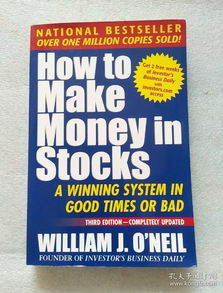Understanding the S&P 500

The S&P 500, or Standard & Poor’s 500, is a widely recognized index that tracks the performance of 500 large companies listed on stock exchanges in the United States. It represents a significant portion of the U.S. economy and is often used as a benchmark for the stock market’s overall health.
Investing in the S&P 500

Investing in the S&P 500 can be done in several ways, each with its own set of benefits and risks. Here are some of the most common methods:
Direct Stock Purchase
One way to invest in the S&P 500 is by purchasing shares of individual companies within the index. This requires research and a good understanding of the market, as well as the ability to manage your portfolio actively.
Index Funds and ETFs
Index funds and exchange-traded funds (ETFs) are designed to track the performance of the S&P 500. By investing in these funds, you gain exposure to the entire index without having to buy individual stocks. This can be a more cost-effective and less time-consuming approach.
Index-Based Mutual Funds
Similar to index funds, index-based mutual funds are designed to track the S&P 500. They offer the same benefits as index funds, such as diversification and lower fees, but may have different tax implications.
Strategies for Making Money from the S&P 500

Once you’ve decided how to invest in the S&P 500, it’s important to have a strategy for making money. Here are some common strategies:
Long-Term Investing
Long-term investing involves holding your investments for an extended period, typically several years or more. This strategy is based on the belief that the stock market will generally increase in value over time. To make money from the S&P 500 through long-term investing, you’ll need to be patient and disciplined.
Dividend Investing
Dividend investing involves focusing on companies within the S&P 500 that pay dividends. Dividends are a portion of a company’s profits that are distributed to shareholders. By investing in dividend-paying companies, you can generate income from your investments in addition to potential capital gains.
Options Trading
Options trading allows you to speculate on the future price of the S&P 500 or individual stocks within the index. This can be a more complex and risky approach, but it also offers the potential for higher returns.
Market Timing
Market timing involves trying to predict the direction of the stock market and making investment decisions based on those predictions. While some investors may find success with this strategy, it can be challenging and often leads to subpar results.
Monitoring Your Investments
Regardless of the strategy you choose, it’s important to monitor your investments regularly. This will help you stay informed about the performance of the S&P 500 and the companies within it, and allow you to make adjustments to your portfolio as needed.
Conclusion
Investing in the S&P 500 can be a great way to grow your wealth over time. By understanding the index, choosing the right investment vehicles, and implementing a solid strategy, you can increase your chances of success. Remember to stay patient, disciplined, and informed, and you’ll be well on your way to making money from the S&P 500.
| Investment Method | Description |
|---|---|
| Direct Stock Purchase | Purchasing shares of individual companies within the S&P 500 |
| Index Funds and ETFs | Funds designed to track the performance of the S&P 500 |
| Index-Based Mutual Funds | Mutual funds designed to track the S&P 500 |


